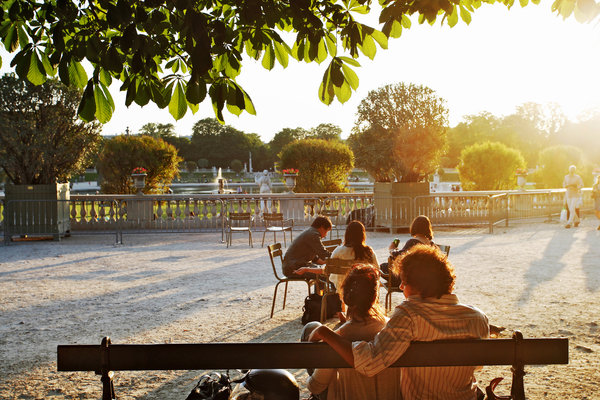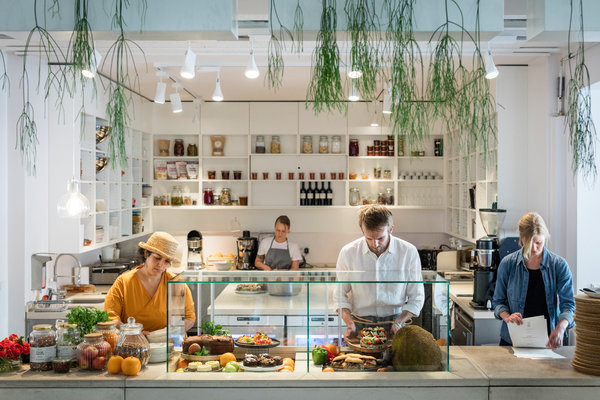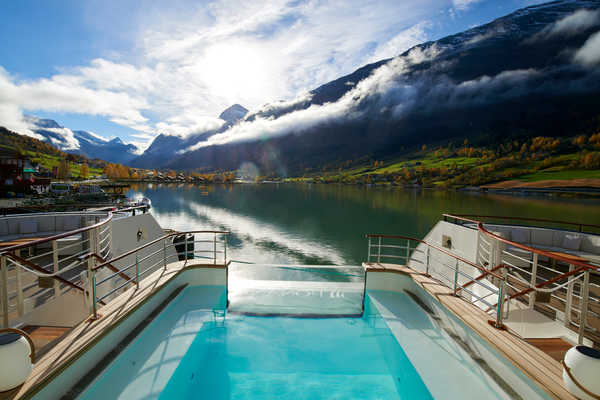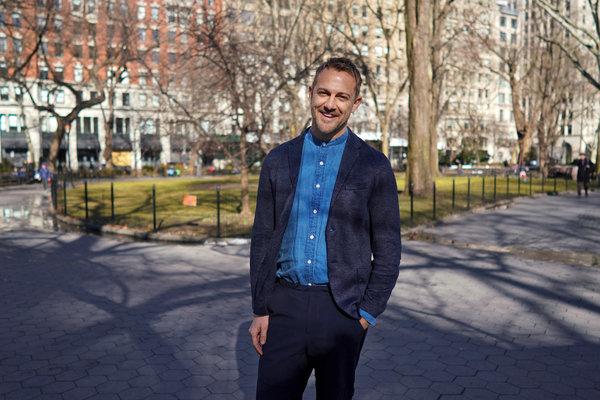During a 10-day tour of India, Farryn Truen sketched out an ambitious itinerary to visit Delhi, Jaipur, Ranthambore National Park, Alwar and Agra, that included a big-ticket item: She and her now-husband, Jake, hired a private driver for their trip. Paying for that meant forgoing activities — there was no hot air balloon ride in Jaipur — and downgrading to budget-friendly hotels for part of the trip.
But it’s the go-to travel splurge for Ms. Truen, 33, a New York-based brand consultant and frequent traveler: a way to see more of the place she is visiting at her own pace, make local connections, and avoid all the wasted time spent traveling to, from and in airports.
“My husband and I have this joke that we’ve had some of our favorite meals at rest stops because you get to see real life,” Ms. Truen said. “Immersing myself in a place is the ultimate luxury.”
Among seasoned travelers, selective splurging — picking the one thing they’ll spend big on, while saving everywhere else — is a common strategy for getting the most out of a trip. The additional spend doesn’t have to be sizable; it can be several thousand on a nice hotel room — or a hundred dollars or less on a local experience. It’s about mindfully choosing to allocate a little extra on one part of the trip to make it easier, more memorable or more engaging.
The indulgences can be directed at any step of the adventure: hotel, excursions, a particularly unforgettable meal. For some, practical upgrades — a nonstop flight, a nicer rental car — make all the difference. Chris Jackson, a London-based photographer for Getty Images, recommends a good pair of noise-cancelling headphones. “They make a massive difference,” Mr. Jackson said of his Bose Quietcomfort 35 II pair ($349.95). He often doesn’t even play music on them, preferring to just drown out other passengers.
Elaine Welteroth, an author and the former editor in chief of Teen Vogue, always hunts for a fabulous vintage souvenir. The 32-year-old’s closet is home to a few 40s-style dresses from a shop in Amsterdam that cost about $60 apiece and a Calvin Klein Collection faux fur coat that she “spent way too much on” in New Orleans. “Every item is totally unique to that place and time in my life,” she said.
Strategic luxury can be a way of splurging and saving at the same time. The actress, author and talk show host Busy Philipps doesn’t always travel on a budget, but when she does she makes finding the perfect resort her focus, then economizes on the room. “We will rent the cheapest room in the nicest hotel,” she said. “I don’t mind, on vacation, being cramped.”
Last year, she and her family stayed at the Four Seasons Resort Punta Mita in Mexico. The family of four squeezed into one of the hotel’s standard rooms (which can range from $450 to $2,200 a night, depending on the season, according to the hotel) with her two daughters sleeping on a pull-out couch. While the same money would have bought a bigger room at a less luxurious resort, it wouldn’t have given them the access to the same pristine beaches and infinity-edge pool. And springing for a one-bedroom at Punta Mita would have cost twice what they paid. (She also recommends a beach-side massage, which provides a relaxing indulgence without sacrificing lounging time.)



In the United States, spending on travel, which includes transportation, lodging and tourist attractions, was expected to reach an estimated $580 billion in 2018, an increase of 23 percent from 2013, according to the market research firm Euromonitor International. Travelers tend to splurge most on where they are headed: More than eight in 10 respondents in the 2017 U.S. Family Travel Survey said they would splurge on the destination. The study, conducted by the Family Travel Association and the Tisch Center for Hospitality at New York University’s School of Professional Studies, surveyed 1,599 people, each representing one family.
Roughly six in 10 will splurge on accommodations and meals out.
This kind of spending — on experiences, rather than more stuff — is a good idea, said Michael Norton, a professor of marketing at Harvard Business School. That’s because, by and large, it’s more satisfying. If it’s between spending $2,000 on a television or a vacation, “for most people the $2,000 vacation will make them happier,” according to Dr. Norton.
But splurging is most effective when done sparingly, something people sometimes forget in this era of overconsumption, Dr. Norton said. “The specialness of the one can be really meaningful,” he said.
Buying yourself time can lead to greater happiness, but it is something many people are reluctant to do.
Ashley Muir Bruhn, who lives in Davis, Calif., recommends paying extra for a direct flight. The mother of two and author of the blog Hither & Thither argues that whatever money you save on connecting flights is negated by the added risks. Missing your next flight or losing your bags is a terrific way to ruin a trip. Two shorter legs could mean less in-flight service, and how much more would you pay for those extra hours at the pool where you are headed?
Plus, there is the mental toll, especially with children (hers are ages 5 and 7). By booking connecting flights, “you’ve made your whole travel time — the not-fun part — so much longer,” Ms. Muir Bruhn, 40, said. Her family takes two to three major trips a year and will go out of their way to get a direct flight. Instead of flying out of Sacramento, the closest airport, she will travel to Oakland or even San Francisco in order to fly nonstop.
Some travelers splurge on making their first moments hassle free. Tina Leung, a stylist and blogger who splits her time between New York and Hong Kong, always hires a black car to pick her up from the airport. “I’m so happy to see someone holding a sign with my name,” Ms. Leung said. “You don’t have to think about it, right when you get off the plane and you’re already frazzled.”
She appreciates it most during fashion week in Paris, which comes after the shows in New York, London and Milan, when she’s lowest on sleep and highest on luggage. The cars often have a phone charger and water ready for her. “It’s small little things that make all the difference,” she said.

Patrick Janelle, known on Instagram as @aguynamedpatrick, likes to upgrade his rental car when traveling to make the trip “that much more comfortable.”CreditChang W. Lee/The New York Times
Patrick Janelle, whose food-and-travel-focused Instagram account @aguynamedpatrick boasts 439,000 followers, splurges on upgrading his rental car. “With just a little extra spending, you can make a really significant part of your travel that much more comfortable,” he said. Mr. Janelle, a 37-year-old New Yorker, once rented a Volvo SUV in Los Angeles via Sixt Rent, a German-based company that offers up-market cars. It was about $360 for four days, Mr. Janelle says, and he planned his day around conference calls on the go.
In Europe, Mr. Janelle prefers to rent scooters. The pristine, royal blue Vespa he rented in Cannes, spending about $280 dollars for three days, made for the perfect backdrop for one of his Instagram posts. “I’m often thinking about what details in my life in general are photo-worthy,” Mr. Janelle said, “or what I can do to make them photo-worthy.”
Lodging is a much more common splurge, whether on a carefully situated (and decorated) AirBnb or a four-star hotel. “I want to wake up in a place that brings me joy,” said Ukonwa Ojo, a New York-based marketing executive. “I’m inelastic when it comes to cost on that.” She researches heavily before booking, reading reviews everywhere she can find them and making sure the accommodations are known for their high-touch service. Her stays have ranged from a room with a sea view at the Sofitel Bahrain that won’t break the bank (up to $320 a night, according to the hotel) to the Zen grand experience at the all-inclusive Grand Velas Riviera Maya in Mexico (starting at $434 per person based on double occupancy, according to the hotel).
Ms. Ojo remembers her stay at the Taj Exotica in the Maldives, in a deluxe lagoon over-water villa (from $1,109 to $1,725 a night, double occupancy, according to the hotel), particularly fondly: “You didn’t even want to leave your room it was just so special,” Ms. Ojo said.
Hotel splurging is not limited to cash. The longtime journalist Dan Frommer, 36, founder of the travel rewards newsletter Points Party, will go out of his way on a work trip to earn enough Hyatt points for a later luxury stay on vacation. On a work trip to San Francisco last year, he stayed in a Hyatt to get the points, even though it was in Emeryville, on the other side of the Bay and required an extensive bus ride each morning.
The reward? “I’m overlooking this skyline of Tokyo,” he said, talking by phone from the 48th floor of the Andaz hotel there, where the entry-level rooms range from 40,000 to 123,000 yen per night, according to the hotel (roughly $360 to $1,100 depending on the time of year). The points price is steep, too — it cost him 25,000 a night — but worth it, he said.
“When you are on the other side of the world, when your sleep schedule is messed up, it’s really nice to come back to a large, well-designed, well-appointed room with a beautiful view,” Mr. Frommer said. His strategy is to splurge for three nights. One night goes by too quickly; two is adequate, giving you one whole day to “spread your stuff out,” Mr. Frommer said. But three feels like a real indulgence and enough time to enjoy all the hotel has to offer.
If he’s spending money, as opposed to points, Mr. Frommer, founder of a new online publication called The New Consumer, is willing to pay for the possibility of a “life-altering meal,” he said. He had just eaten at Inua, the new Tokyo restaurant from Noma-trained Thomas Frebel, with friends (his share of the tab: $333.41) and was still processing the dish made from nasturtium leaf and enoki mushroom. And he was more than happy to eat hard-boiled eggs and salmon onigiri rice balls from the corner store some days as a trade off.
“Splurging on food is totally an acceptable and worthwhile and delightful way to spend too much money,” he said.
52 PLACES AND MORE Follow Sebastian Modak, this year’s 52 Places traveler on Instagram as he travels the world, and discover more Travel coverage by following us on Twitter and Facebook. And sign up for our Travel Dispatch newsletter: Each week you’ll receive tips on traveling smarter, stories on hot destinations and access to photos from all over the world.






